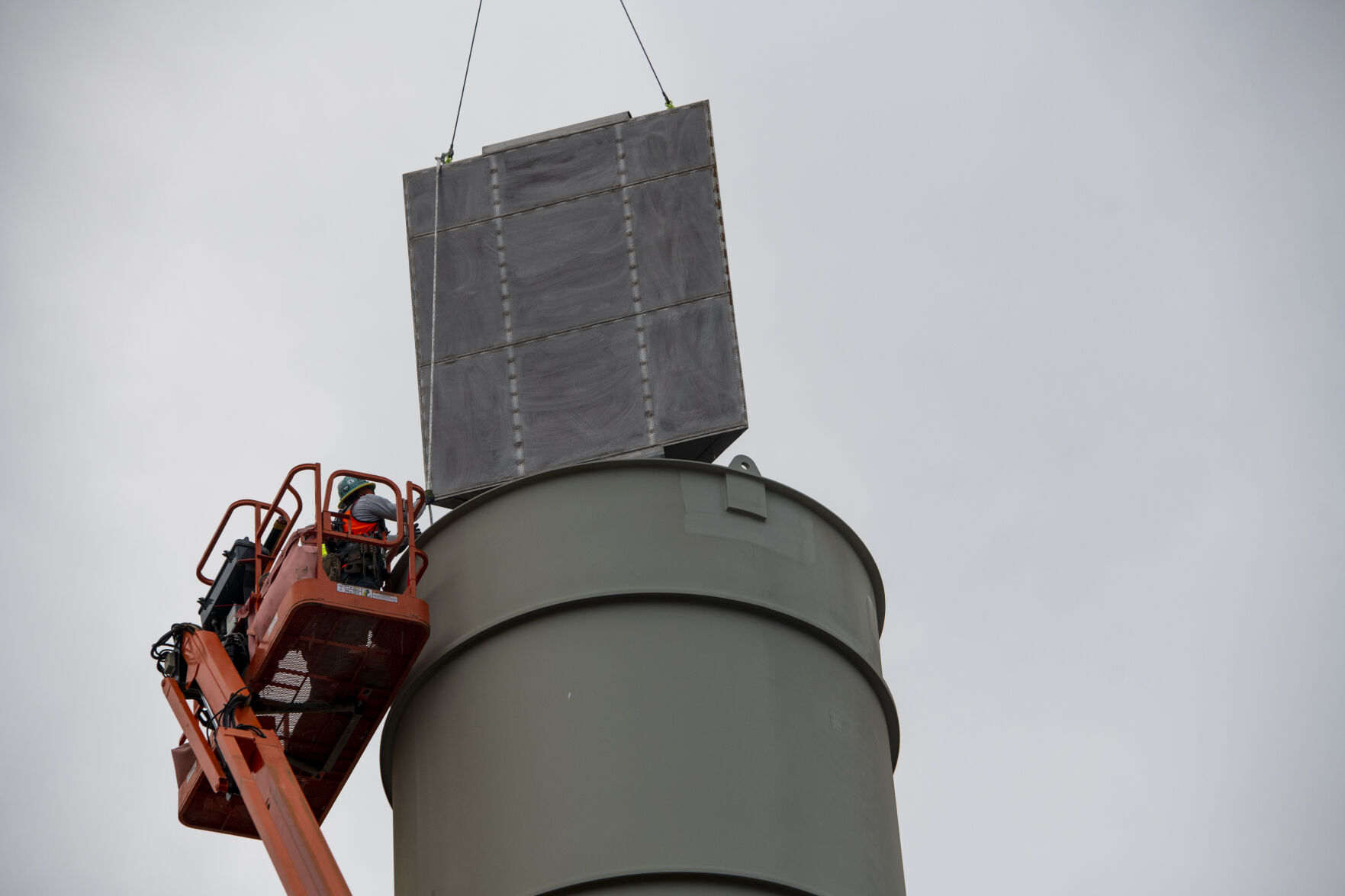Colorado Springs takes major step toward cleaner energy with completion of $200 million natural gas units at Martin Drake

In a landmark moment in Colorado Springs’ move toward cleaner electricity generation, six new natural gas generating units now stand where coal once piled up near the closed Martin Drake Power Plant downtown.
“The utilities industry is changing by the day – from market costs and technology to regulatory mandates and deadlines,” Colorado Springs Utilities Board Chairman Dave Donelson said, in part, in a news release Tuesday. “… I’m excited to commemorate the completion of these natural gas generating units because they represent the balance that we strive for – managing cost impacts and maintaining reliability, while also delivering clean energy.”
Colorado Springs Utilities details year-plus plan for demolishing Martin Drake Power Plant
Colorado Springs Utilities began installing the modular units in September 2021 that officials say will ensure better energy reliability and resiliency for customers. The new turbines will run between 5% and 30% of the time to help fill peak demand on the community’s hottest and coldest days and can be started up in minutes, as opposed to the several hours’ startup time required by a coal plant, Utilities spokesman Steve Berry said Tuesday.
“That’s really important in managing our electric grid moving forward. … We want reliable natural gas services in our portfolio so that as technology improves, as battery storage improves, as we get more access to solar and wind (power), then we can carefully make that jump and we’re not instituting more onerous financial impacts on our customers,” he said.
The new units cost just over $200 million – including the price of the units and the labor to install them – Berry said. They produce low emissions and up to 167 megawatts of power while covering only about 5 acres compared to Drake’s 50 acres, he said.
Low emissions outputs are a big advantage because the city must meet evolving state emissions mandates, he said. The new turbines also bring Colorado Springs closer to its goal of reducing carbon emissions at least 80% by 2030 and 90% by 2050.
The new units can also run on natural gas and diesel, allowing Utilities to provide an alternate fuel source on-site if there are any issues with natural gas supply. This helps insulate customers a bit from huge spikes in natural gas costs resulting from supply shortages or interruptions, Berry said.
Natural gas units going up at Drake Power Plant, deconstruction of building likely years out
Eventually, officials will relocate the six modular units out of downtown to other parts of the utility’s electric grid “to maintain system resiliency and reliability,” the news release states.
The city is also forging ahead with a year-plus plan to demolish the aging, nearly 100-year-old plant, one of the last remaining urban power plants in the country. Independence Demolition, an Ohio-based company with a Denver office, will oversee the plant’s physical breakdown and removal of its old internal equipment, stacks and buildings.
Officials expect demolition to happen in eight phases, with work set to begin in June and wrapping up by the end of 2024.
Closing the coal-fired plant and installing the new modular gas units are steps the city-owned utility is taking not only to reduce carbon emissions but also to add renewable resources like solar and wind power to its portfolio and incorporate new technologies like battery storage into the electric grid.
For example, Utilities plans to bring the 175-megawatt Pike Solar project online by 2024. When it is built, it will be the largest solar facility on Utilities’ electric grid, the release said.
Colorado Springs Utilities to end power production at Drake
Officials estimate renewable energy will account for 27% of Utilities’ entire energy portfolio after the Pike Solar project is completed.
By 2025 Utilities also plans to add between 100 to 200 megawatts of battery storage, the first of its kind on the system, officials said in the release. Battery storage can help increase the energy grid’s flexibility as new power resources are added to Utilities’ portfolio, they said.
The new natural gas generating units can also produce power for a profit on the open market, Berry said.
In August, Utilities joined the Southwest Power Pool to allow for those sales, as well as the ability to tap into that market as needed to purchase lower-cost energy as opposed to the higher-priced and volatile open market, he said.
Joining that pool saved the utility $2.1 million in five months between August and December, Berry said.

















